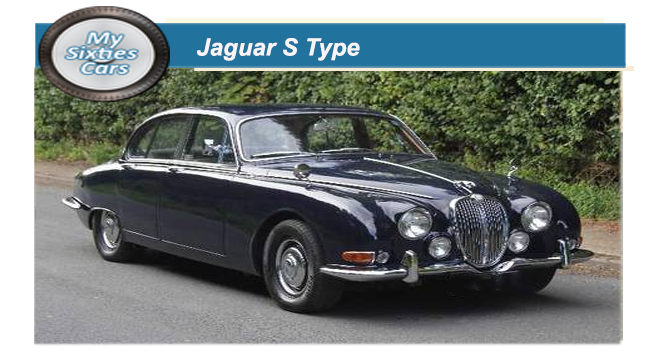
In September 1963 Jaguar's latest model was released - the Series S saloons.
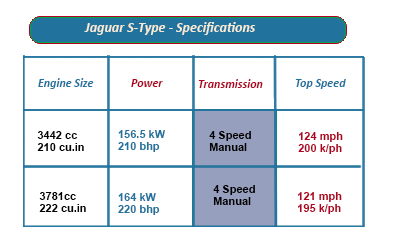 The S Series were designed to provide something of a half-way house between the accepted Mark II cars and the new Mark X, featuring much of the technical characteristics of the former and the design features of the latter, albeit on a much smaller scale.
The S Series were designed to provide something of a half-way house between the accepted Mark II cars and the new Mark X, featuring much of the technical characteristics of the former and the design features of the latter, albeit on a much smaller scale.
The Jaguar S-types were attractive hybrids, combining the relatively compact size and performance of the popular Mark IIs with the refinement and ride of the sophisticated Mark X.
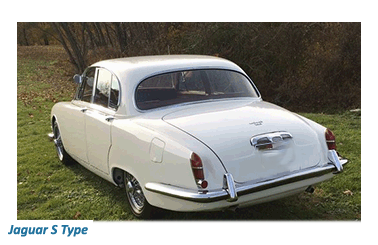 Of the two engines on offer, the 3.8-litre (232 cu in) was the most in demand, providing first-class acceleration that allowed the car to cruise at well more than 120mph (192 k/ph).
Of the two engines on offer, the 3.8-litre (232 cu in) was the most in demand, providing first-class acceleration that allowed the car to cruise at well more than 120mph (192 k/ph).
Twin SU HD6 carburettors also came as standard.
Just over ten thousand S-Types were fitted with the 3.4-litre (210 cu in) engine, with the 3.8 litre (232 cu in) version faring much better at just over fifteen thousand units sold.
In the early years of the S-Type's production, the car's gearbox, a standard manual Moss, was the topic of considerable criticism.
A four-speed unit with synchromesh on only the upper three ratios the gearbox was slow, cumbersome and sometimes unpredictably erratic.
![]()
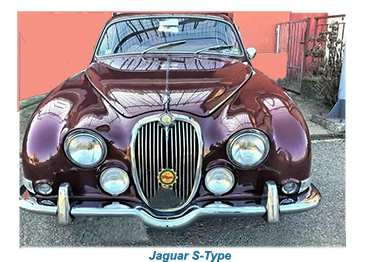
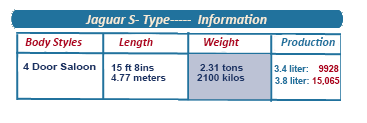 In answer to an increasing barrage of customer complaints, in October 1964 Jaguar released a new manual gearbox that featured baulk-ring synchromesh on all four forward speeds making for a significant improvement in driver pleasure.
In answer to an increasing barrage of customer complaints, in October 1964 Jaguar released a new manual gearbox that featured baulk-ring synchromesh on all four forward speeds making for a significant improvement in driver pleasure.
The Jaguar S Type's body styling was altered to incorporate a Mark X-style flattened tail and lower roof, while the nose remained Mark H apart from a more substantial grille surround, cowls over the head and fog lamps, shallow section bumpers and elongated sidelights incorporating turn indicators.
The new model had a wheelbase inches several longer than the Mark II, a slightly wider track and was heavier.
The body styling was altered to incorporate a Mark X-style flattened tail and lower roof, while the nose remained Mark H apart from more substantial grille surround, cowls over the head and fog lamps, shallow section bumpers and elongated sidelights incorporating turn indicators.
![]()
The Jaguar S-types were attractive hybrids, combining the relatively compact size and performance of the popular Mark IIs with the refinement and ride of the sophisticated Mark X.
To those who were prone to make comparisons, the S-type was a better car than the Mark IIs.
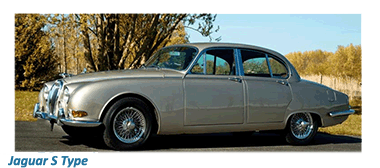
It was always evident that the S-type indicated a clever marketing exercise from Jaguar, creating a perfect compromise situation, sitting precisely in its niche, halfway between these two top sellers of the early Sixties.






